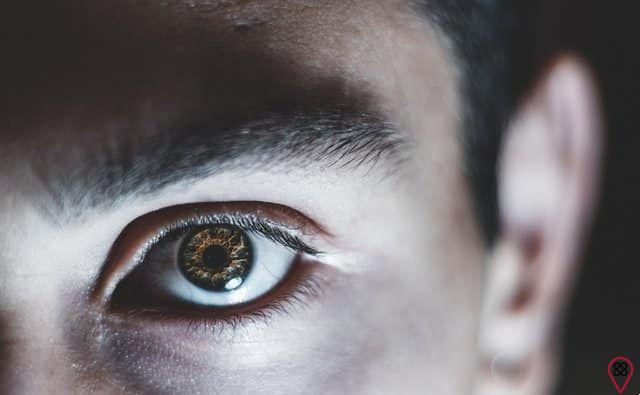Hypnosis over the years has had much of its fame drawn from cartoons, where someone would always swing one of those old pocket watches with a string to hypnotize someone. So this was the fame of hypnosis: um trick cartoon.
But that has changed, drastically, and for the better.
In the year 1997 – just 18 years ago – researcher Henry Szechtman led a scientific experiment that aimed to purposely cause an auditory hallucination. In this experiment, Szechtman had the eight people being tested claim that they had heard a sound that had been previously played, even when that sound had not been played. He managed to prove that it is possible to program the brain directly to interpret some kind of order or command using certain techniques.
Since then, Hypnosis has been gaining strong attention from Neuroscience and renowned professionals in Modern Medicine, such as neurologists¹ and heads of the Federal Council of Medicine² and today, we already have a Spanish Institute of Hypnology³ which has generated more credibility and confidence in the first patients who underwent this type of treatment.
OK! But what can hypnosis do in practice to help?
Many things. Science has been intensively studying the use of Hypnosis in different areas of our lives, but at least it has concluded and proved that this tool can:
- decrease and neutralize physical pain (including childbirth);
- decrease and cure depression;
- decrease and cure anxiety;
- decrease and heal traumas, fears and phobias;
- improve self-esteem;
- improve your concentration;
- remove emotional disturbances;
- improve nights sleep;
- help you lose weight (faster than usual);
- decrease and remove stress;
- lessen and remove frustrations;
- remove addictions with drugs, alcohol, cigarettes, etc.
And these are just some points where Hypnosis can improve a person's life because there are over 60 different ways in which this treatment methodology can be applied to patients today. It is one of the best options for removing mental limitations and permanently healing emotional blocks.
Hypnosis has also gained ground in forensic/criminal science, as it has helped authorities extract confessions from suspects with much greater ease, as it is possible to have broader and more direct access to someone's memory through a hypnotic trance. This allows for unique assessments of what a person really knows, as it also involves their unconscious in the process.
And like I said, this is just the beginning.
The Key Principle of Hypnosis and the Five Doors of Perception
The key principle of Hypnosis is the starting point that allows a person to be hypnotized. It is what needs to happen first in order to bring someone into a hypnotic trance state. This rule is very simple, and it boils down to what I show below:
You must hold attention of the individual while increasing its degree of inhibition. Briefly, in more scientific terms you need:
- Suppress the limbic system – responsible for emotions and social behaviors;
- Stimulate the neocortex – responsible for sensory functions and voluntary movements.
Once this is done you must apply the hypnotization techniques, working with one of the five doors of perception. These five doors are the methods most used today by various professionals in Hypnotherapy, Medicine, Psychotherapy and other areas of Science, and are listed below:
- Confusion – Method aimed at getting into the minds of more resistant people, and consists of deluding the patient with unusual acts. A hug that lasts and turns into a kind of massage would be an example of confusion, as the brain was expecting a hug from the hypnotist due to past experiences.
- Shock – Method focused on simulating a common hypnosis. An example would be passing the hands over a person's head and then suddenly, the hypnotist makes a sudden gesture, throwing the subject's head back while at the same time yelling "Sleep!";
- Imbalance – This method focuses on getting the individual to remain in a position where it is very difficult to stand. At the same time, the hypnotist asks the subject to focus on their arms and legs, forcing the subject to seek a next command from the hypnotist, thus holding their attention;
- Eye fixation – The most popular method of all thanks to the famous pocket watch. It consists of making the person stare at a point/object to prevent distractions and make it easier to program their mind;
- Narrative – This method focuses on asking the individual to relax each member of the body and then having them imagine a story. This is what it is necessary to do to start hypnotizing a person in practice and without it, there is no hypnosis. However, this is not enough because apart from these points above, it is also necessary for the professional to master their body language, their way of making eye contact and their tone of voice when hypnotizing, so that it is possible to influence the person.
It is all these points very well executed together that makes all the difference.
The successful explosion of hypnosis treatment on the market

After Hypnosis has had its medical and therapeutic potential proven by science, with several studies showing the same results and validating its treatment methods, many professionals from abroad and from Spain began to incorporate Hypnosis into the daily lives of their patients. As a result, hypnosis has had countless success stories circulated at a frightening speed, and many of them have ended up in the media. This gave some fuel to even triple the number of treatments in España in a short time.
Hypnosis has surpassed other treatments. People are choosing this method over those that involved greater use of drugs, more aggressive medical interventions and longer periods of treatment.
By working directly with the mind, Hypnosis approaches can really bring solid and permanent results in weeks, rather than months (and even years) of conventional treatments. And people began to notice and experience that. Then reports about treatments using this tool spread across the internet, making her have a completely different fame than she had 15 years ago.
And today, she has helped millions of people heal from various problems in record time. And new advances have appeared, promising even better things for the future. Less medication, less treatment time. Less problems and more quality of life. And then? Have I convinced you about the effects and advantages of hypnosis?

























